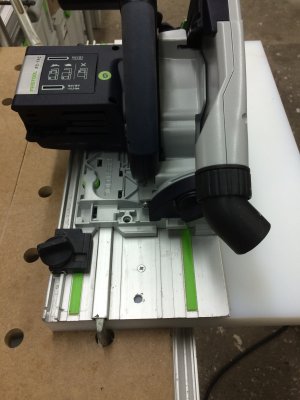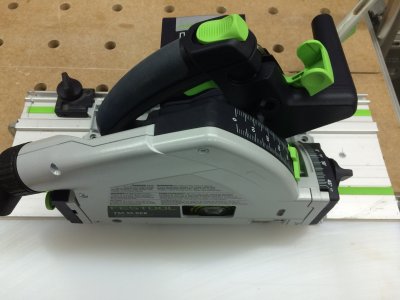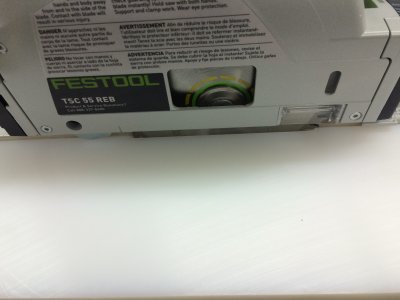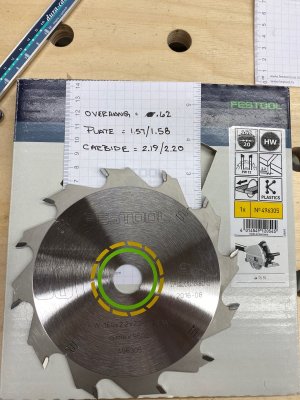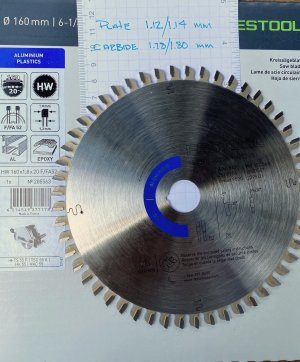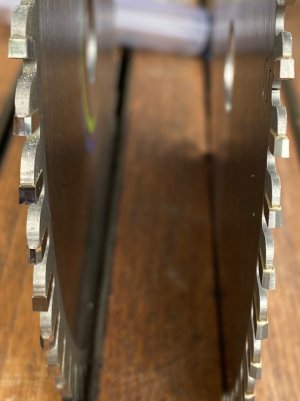smorgasbord
Member
- Joined
- Jan 7, 2022
- Messages
- 1,072
With different blades having different blade body thicknesses and different kerf thicknesses, does anyone here think they need to dedicate certain guide rails to certain saw/blade combos?
Given the geometry of most track saws, the fixed flange of the arbor locates the "inside" of the blade at the same point every time. But, if the different between the carbide tip thickness and the blade body thickness is different (the tip "overhang" so to speak), then the anti-splinter strip edge won't be in exactly the same place. Like if you've got a 1.5mm body and a 1.8mm kerf for one blade (0.15mm overhang), and a 1.8mm body and 2.4mm kerf (.3mm overhang) for another blade [I just made those numbers up], then the trimmed anti-splitter strip would be in different places.
Now, that's just 0.15mm difference, so maybe in practice it doesn't matter. Anyway, just wondering.
While I'm in OCD mode, also wondering about the blade angle pivot. While track saws are designed to pivot at the anti-splinter strip, is that at the top of the strip or at the bottom? I'm assuming at the bottom, at least that's where I would choose to place it, as that doesn't cut any more of the strip but still has the strip performing its duty. And, wondering how well different brands/models get this right/wrong.
Given the geometry of most track saws, the fixed flange of the arbor locates the "inside" of the blade at the same point every time. But, if the different between the carbide tip thickness and the blade body thickness is different (the tip "overhang" so to speak), then the anti-splinter strip edge won't be in exactly the same place. Like if you've got a 1.5mm body and a 1.8mm kerf for one blade (0.15mm overhang), and a 1.8mm body and 2.4mm kerf (.3mm overhang) for another blade [I just made those numbers up], then the trimmed anti-splitter strip would be in different places.
Now, that's just 0.15mm difference, so maybe in practice it doesn't matter. Anyway, just wondering.
While I'm in OCD mode, also wondering about the blade angle pivot. While track saws are designed to pivot at the anti-splinter strip, is that at the top of the strip or at the bottom? I'm assuming at the bottom, at least that's where I would choose to place it, as that doesn't cut any more of the strip but still has the strip performing its duty. And, wondering how well different brands/models get this right/wrong.


